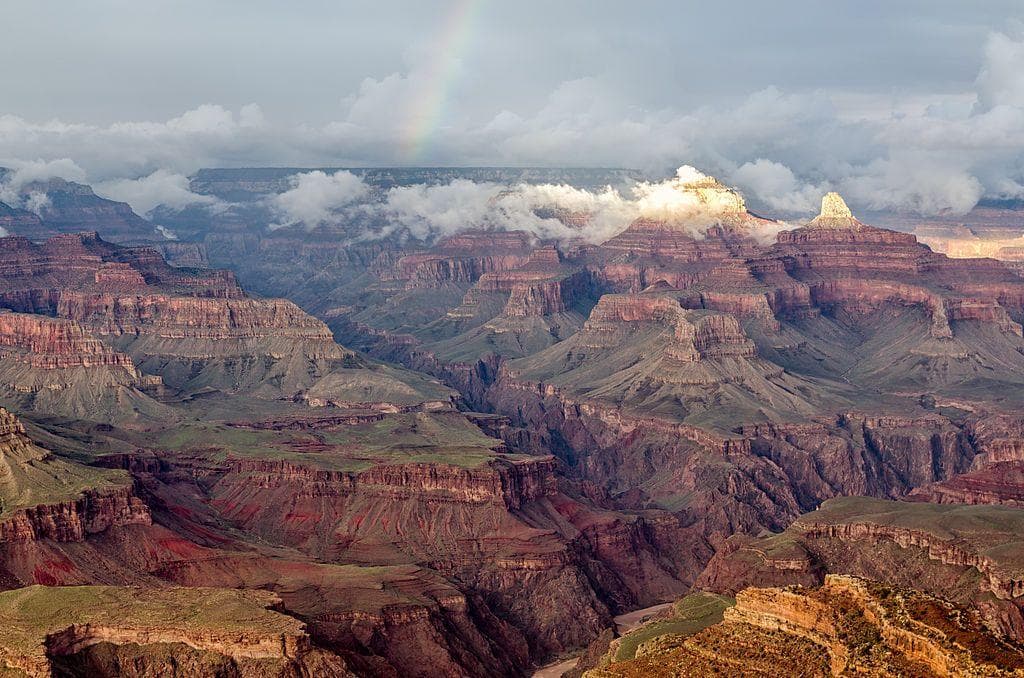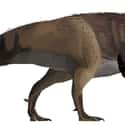-

(#9) The Biggest Animal In The World Was Actually The Ledumahadi Mafube - A 26,000-Pound Dinosaur Twice The Size Of An African Elephant
In September of 2018, a new dinosaur claimed the top spot as largest animal on Earth. Researchers in South Africa revealed a new, giant relative of the brontosaurus estimated to have been nearly twice the size of the massive African elephant, based on its restored fossil. Named “Ledumahadi mafube” - or “a giant thunderclap at dawn” in the local language of Sesotho - researchers now believe this dinosaur was one of the largest animals on Earth during the early days of the planet’s existence, about 200 millions years ago. These 26,000-pound creatures were most likely related to the giant dinosaurs inhabiting what is modern-day Argentina, when Pangaea made overland transport more accessible.
Reportedly, the Ledumahadi is closely related to sauropod dinosaurs - similar to the brontosaurus. But unlike the famous four-legged, plant-eating bronty, the Ledumahadi is believed to have been what researchers call a “transitional” dinosaur, or what CNN described as “an evolutionary experiment… during the early Jurassic period [in which] the forelimbs of this dinosaur are more ‘crouched,’ while being very thick to support its giant body.”This presumably means the dinosaur may actually have evolved from two-legged ancestors, but scientists posit the way in which it evolved to four legs helped its digestive system handle a more vegetarian-based diet.
-
(#17) The Spinosaurus Was An Aquatic Dino
The Spinosaurus had a starring role in Jurassic Park III, thanks to its enormous size and vicious claws. Though the film depicted the Spinosaurus battling a Tyrannosaurus rex on land, a 2014 discovery in North Africa confirmed the species was primarily an aquatic dinosaur.
Accordingly, Spinosaurs were similar to crocodiles in many ways, including their snout shape and bone structure, which made them well-adapted to hunting in the water. The dinosaur's aquatic connection was further cemented by the discovery of a nearly complete tail fossil, which resembles a paddle.
The anatomy of this tail suggests that, rather than catching fish at the edge of bodies of water, the Spinosaurus was an active swimmer. According to a study published in the journal Nature:
Contrary to recent suggestions that Spinosaurus was confined to wading and the apprehension of prey from around the edges of bodies of water, the morphology and function of its tail - along with its other adaptations for life in water - point to Spinosaurus having been an active and highly specialized aquatic predator that pursued and caught its prey in the water column.
-
(#23) A Massive Increase In The Fossil Record Means That Dino-Science Will Remain In Continual Flux
Paleontologists are aware their understanding of dinosaurs may completely change over the next few decades. The fossil record is growing at a rapid rate. As paleontologist Jonathan P. Tennant explains, "There are still huge gaps in our knowledge of the fossil record, and areas in space and geological time where the rapid pace of discovery is changing much of what we thought we knew about dinosaurs."
This “golden age” of discovery has ensured there are already enough fossils available to inspire another few decades of dino revelations. Moreover, there are still multitudes of bones awaiting discovery.
-
(#18) The Traits Defining A 'True' Dinosaur Have Become Extremely Ambiguous
As paleontologists have dug up more prehistoric remains and added to the fossil record, the number of known dinosaur species has skyrocketed. This increase in awareness has led to a decrease in the number of traits distinguishing dinosaurs from other animals.
Having found more traits previously thought of as unique to dinosaurs in non-dinosaurs, paleontologists narrowed down the list of what defines a legitimate dino. According to paleontologist Randall Irmis, the only distinguishing feature of a dinosaur is "having a complete hole in the hip socket.” Every other feature appears in non-dinosaurs. The hips, however, don't lie.
-
(#11) Most Dinosaurs Had Feathers
Books and educational materials traditionally depicted dinosaurs as giant lizards. However, this is beginning to change as their evolutionary connection to birds is becoming increasingly apparent. The idea of a dino with plumage is difficult to imagine, but the majority of paleontologists now agree most - if not all - dinosaurs had feathers.
The discovery didn't happen all at once, but in stages, as researchers discovered more feathered specimens, and the truth became impossible to ignore. Since feathers don't usually preserve well, it took years before scientists discovered enough fossils to support the hypothesis. At first, only flesh-eating dinosaurs purportedly had feathers, but the discovery of a well-preserved, feathered herbivore species in 2014 compelled paleontologists to consider perhaps all dinosaurs were downy.
-
(#14) Dinosaurs Were Surprisingly Good Parents
It is challenging for paleontologists to determine the behavior pattern of dinosaurs due to the sheer time span between the present and when dinosaurs became extinct. While previous schools of thought likened dinosaur parenting to that of modern lizards (most of which lay their eggs, then abandon them), more recent discoveries have hinted several species watched over their eggs and sometimes reared their young hatchlings.
Researchers consider one species in particular, the North American Troodon, the “poster genus for child-rearing theropods” because of their extreme efforts to protect their eggs and younglings from harm.
New Random Displays Display All By Ranking
About This Tool
The earth is about 4.6 billion years old. Dinosaurs lived on this mysterious and huge blue planet about 150 million years ago, and humans appeared about 6 million years ago. Unfortunately, dinosaurs were extinct during the Cretaceous period. For centuries, biologists have different opinions on the reasons for the extinction of dinosaurs, the most convincing theory is that an asteroid impact caused the disappearance of dinosaurs.
Over the years, dinosaur fossils of different periods and types have been discovered, which provide the most powerful evidence for historical research and biological evolution research, and humans can continue to explore the mysteries of dinosaurs. You could know 23 crazy facts about dinosaurs in this random tool.
Our data comes from Ranker, If you want to participate in the ranking of items displayed on this page, please click here.














